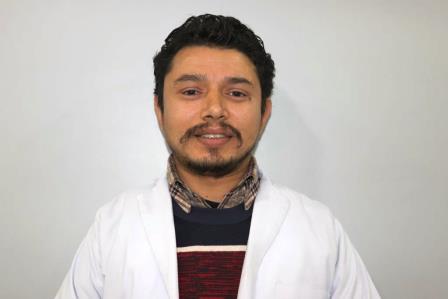My Story Episode 007 || © Vision Club 2020
Hello!
My name is Manju and I am a Sri Lankan. I am now in the travel business but I spent my energetic years as an Optician for almost two decades in Srilanka as well as in Maldives. Here I would like to share some of my experiences while working at a busy high-end optical business.
It was in the late 1990s in Colombo when I decided to learn the art of making glasses. When I first started learning it was really a difficult and tiring task for me – a tough job because you had to study something you never knew or never heard of. My first few days were about identifying lenses: plus lenses, minus lenses, spheres, cylinders, etc. It was too confusing at first but later I slowly got used to them and started fine-tuning my skills in making spectacles.
Today the optical field is fully loaded with technology but when I started we learnt everything manually so that I believe I have acquired great knowledge and experience. Special manual fitting is tough; it’s not easy to learn unless you have prior skill sets. Advanced technology has now revolutionized our way of working. Automated edging machines have made jobs very easy with high accuracy and great cosmesis. We can finish more than a hundred fitting jobs per optician in a day now. Grooving and rimless bevel adjustment is done automatically according to frame curve bevel, and all types of lenses can be cut by a piece of equipment including trivex and polycarbonate. The machine I loved the most is Briot attitude; a really fantastic machine to work with, although I too have experiences using Nidek, Topcon, Essilor and Weco auto-edgers.
When you are working in a high-end practice; your job is really demanding. Customer expectations are so high that you should be so very precise. Now, there are a huge variety and designs of frames available and these arrivals have further toughened our job because fitting in some frames is very challenging. One high quality frame I would like to mention here is a Danish frame named Lindberg which needs special skills. It’s a real challenge mounting lenses on a rimless Lindberg frame because it does not have screws and the temple itself goes into the drilled lenses. In addition, you will need a very hard lens preferably a trivex or a high index. I still remember one of the most difficult frames I ever got: it was a full-rim frame but there was not any screw. When I saw the frame; I refused because I did not have any idea how to fit lenses on it but later I thought that was a new challenge for me and started working and believe me my friends, it took me more about 4 to 5 hours whereby I finally got the job done. That was a German frame named ic! berlin.
After a few months, the same customer came again; Pheww!! a big task again but I didn’t want to spend 4-5 hours and just checked YouTube if there was any video on that and luckily I found one. Later I realized that the fitting was so simple that I felt ashamed. My other experience was with a customer who always used to bring very expensive frames made from horns. Once he brought a half-rim frame and he wanted to have lenses fit but with a different height. He drew the new fitting height of the lens and handed me saying, "I want this size." I made a demo three times, spending more than three hours. He was so scrupulous. I think we gave replacements two or three times on that job until finally he was satisfied. You don't believe me guys! He was the then-president of the Maldives. I didn't know that he was the president; I knew only after my co-workers told me after he went off. Later on, he became the regular customer of our center.
I remember another customer who used to come to me merely to adjust the frame. If I were not there, she would not get it done from others. When she came I had to spend half an hour with her, and in busy hours it would be very difficult to manage time but our boss encouraged that company's primary motto was the customer satisfaction and for that reason I used to do my best to make her happy. Even the slightest misalignment would bring her headaches; sometimes I didn’t use to adjust the frame, rather just keep the glasses with me for a while and give it to her – sometimes psychological treatments are miracles!
I worked very hard to get a lot of experiences with different types of customers in a high-end optical setup in the Maldives and it made me more knowledgeable and confident.
Have a story to share?
Write us: [email protected], [email protected]
Join our Vision Club in Facebook
Click below to read the inspiring stories of:
Rajendra Gyawali, one of the first Scientia Scholar optometrists from Nepal
Dr. Sanjay Marasini, who has a major contribution in finding treatment of ulcers through UV light.
Dr. Nabin Raj Joshi, who is involved in the optical industrial researches in the US
Dr. Sedinam Forfoe, Optometrist from Ghana, who shares his experience while he was in Nepal
Dr. Chundak Tenzing, a significant persona in global eye care
Suresh Awasthi, an optometrist who blends himself in to the society





0 Comments